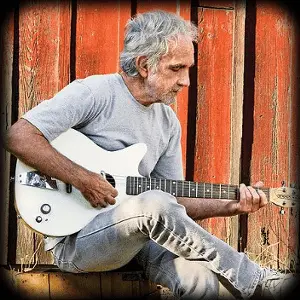JJ CALE
 JJ Cale took relaxed, long-legged boogie rhythms, combined them with tunes that had roots in the Blues, wrote light, clever lyrics he delivered almost in a whisper, and carefully hand-crafted them into hugely influential records. His subtle, understated guitar style is cited by many renowned players as a model of quiet effectiveness.
JJ Cale took relaxed, long-legged boogie rhythms, combined them with tunes that had roots in the Blues, wrote light, clever lyrics he delivered almost in a whisper, and carefully hand-crafted them into hugely influential records. His subtle, understated guitar style is cited by many renowned players as a model of quiet effectiveness.
John Weldon Cale was born in Oklahoma City in 1938, but grew up in Tulsa. He learned guitar as a teenager and began playing with various Rock’n’Roll and Western Swing bands, one of which also had Leon Russell on board. In 1959, John moved to Nashville where he joined the Grand Ole Opry’s touring band for a few years, but after a short time back in Tulsa playing with Leon and local bassist Carl Radle, all three young men relocated to Los Angeles in 1964.
Fantastic film of JJ, his wife Christine and Leon performing ‘After Midnight’;
Leon Russell had just set up his Shelter Records label, so he signed John and set about recording a solo album. Now known as JJ Cale, to distinguish him from the Velvet Underground bassist John Cale, he took a while to complete his album in Nashville, and ‘Naturally’ was released in 1972. The album sold well all over the world, partly on the back of Clapton’s global status but it had a unique groove and fine tracks like ‘Call Me the Breeze’ and ‘Clyde’, which would later be covered many times. JJ enjoyed playing live music and he toured regularly, but he was never a prolific recording artist and he hated the promotional side of the business, refusing to lip-synch on TV. In the studio, he would arrange, engineer and produce his own music, playing most of the instruments and placing his vocals quite low in the mix. His albums ‘Really’ and ‘Okie’ appeared in the next two years, and ‘Troubadour’ was released in 1976. A track from this album, ‘Cocaine’, was again covered by Clapton on his ‘Slowhand’ album, and again it was a world-wide hit. JJ’s distinctive and original laid-back style became known as ‘the Tulsa sound’, and was a huge influence on Mark Knopfler who was playing pub gigs in London with a band that would later become Dire Straits.